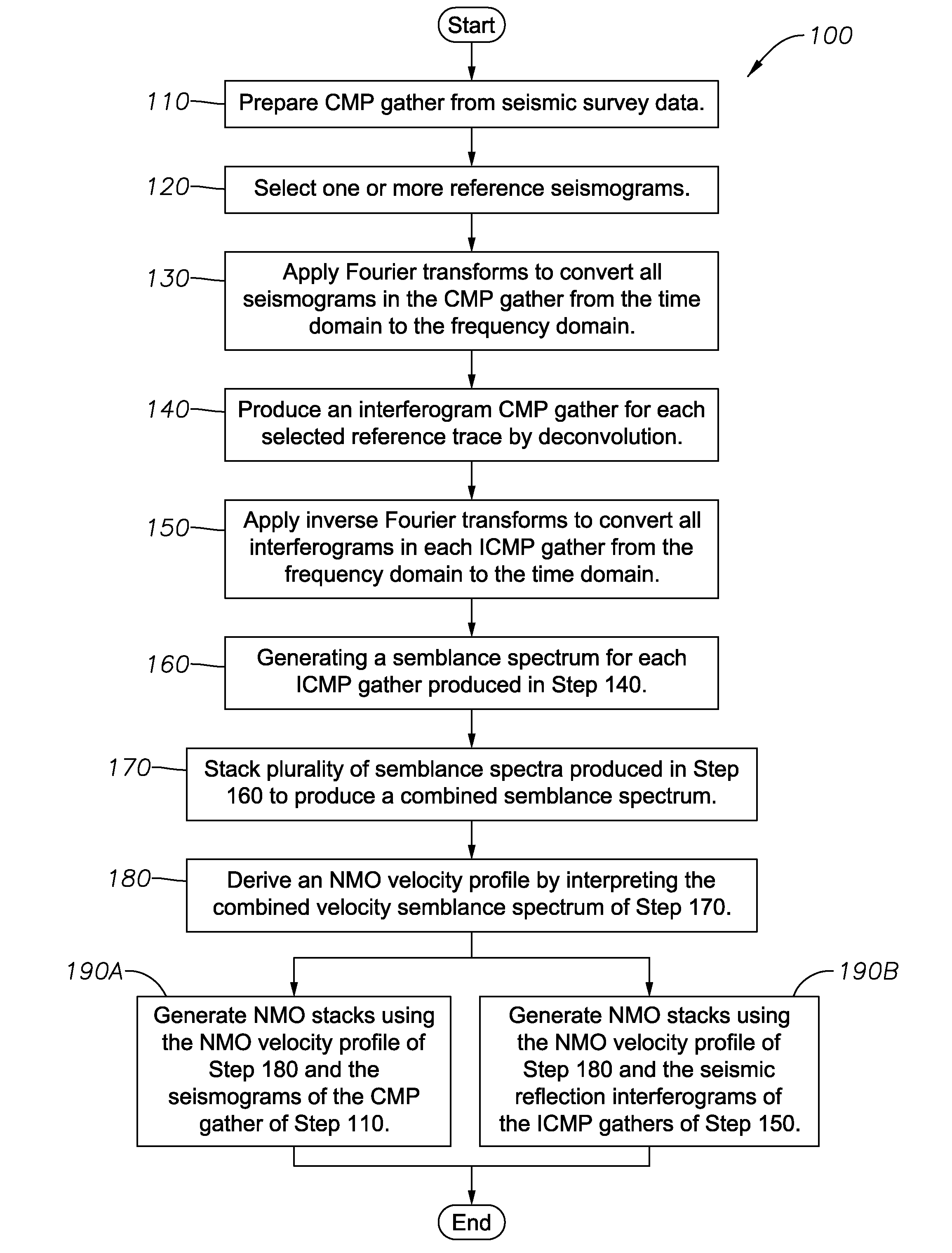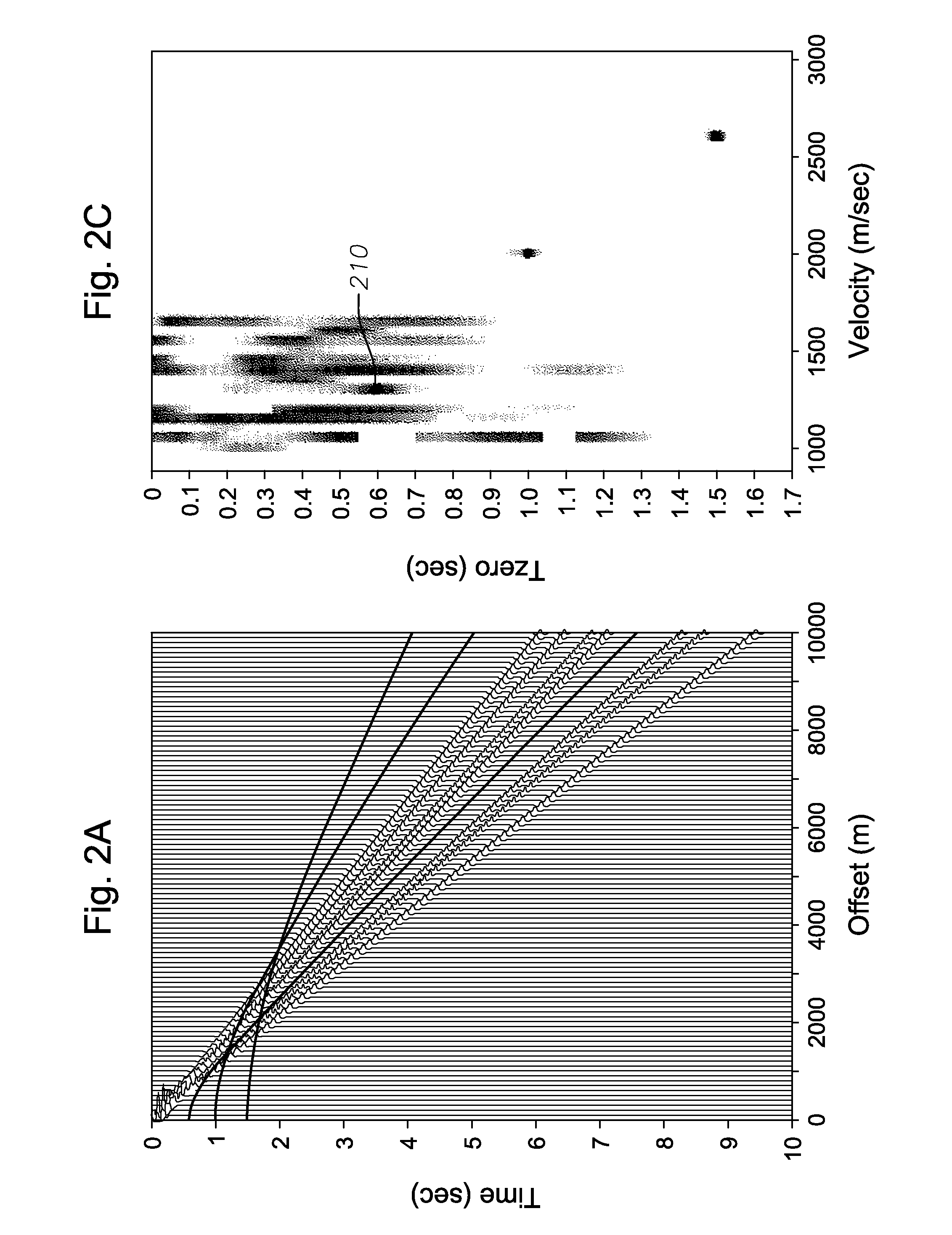Processing seismic data using interferometry techniques
a seismic data and interferometer technology, applied in the field of seismic data processing, can solve the problems of affecting the interpretation, affecting the quality of the subsurface image obtained, and the typical techniques applied during seismic data processing may not adequately amplify the reflection signal and attenuate the unwanted signal
- Summary
- Abstract
- Description
- Claims
- Application Information
AI Technical Summary
Benefits of technology
Problems solved by technology
Method used
Image
Examples
Embodiment Construction
[0020]In general, one or more implementations of various technologies described herein are directed to a method for processing seismic data using seismic interferometry techniques, which are based on traveltime differences. The seismograms may first be sorted into a common midpoint (CMP) gather, which then may be converted to a plurality of interferogram common midpoint (ICMP) gathers. After the conversion, a semblance spectrum may be computed for the ICMP gathers. The semblance spectrum may then be used to derive a normal moveout (NMO) velocity profile, which may then be used to generate NMO stacks using either CMP gathers or ICMP gathers. In one implementation, after the conversion of CMP gathers to ICMP gathers, NMO stacks may be generated from the ICMP gathers without first computing the semblance spectrum in the seismic interferogram domain. Various implementations of the method are described in more detail in the following paragraphs.
[0021]FIG. 1 illustrates a flow diagram of ...
PUM
 Login to View More
Login to View More Abstract
Description
Claims
Application Information
 Login to View More
Login to View More - R&D
- Intellectual Property
- Life Sciences
- Materials
- Tech Scout
- Unparalleled Data Quality
- Higher Quality Content
- 60% Fewer Hallucinations
Browse by: Latest US Patents, China's latest patents, Technical Efficacy Thesaurus, Application Domain, Technology Topic, Popular Technical Reports.
© 2025 PatSnap. All rights reserved.Legal|Privacy policy|Modern Slavery Act Transparency Statement|Sitemap|About US| Contact US: help@patsnap.com



